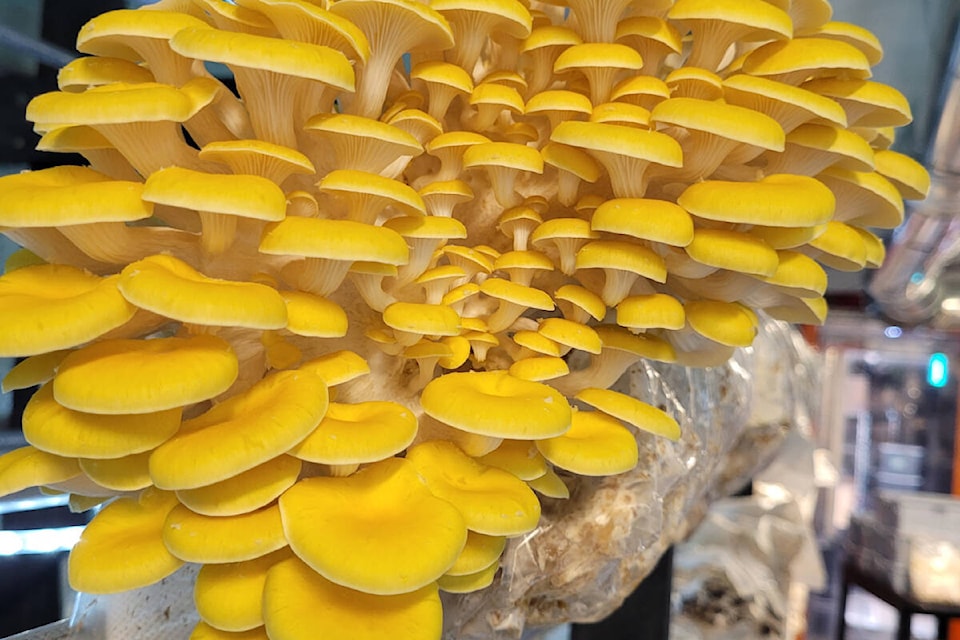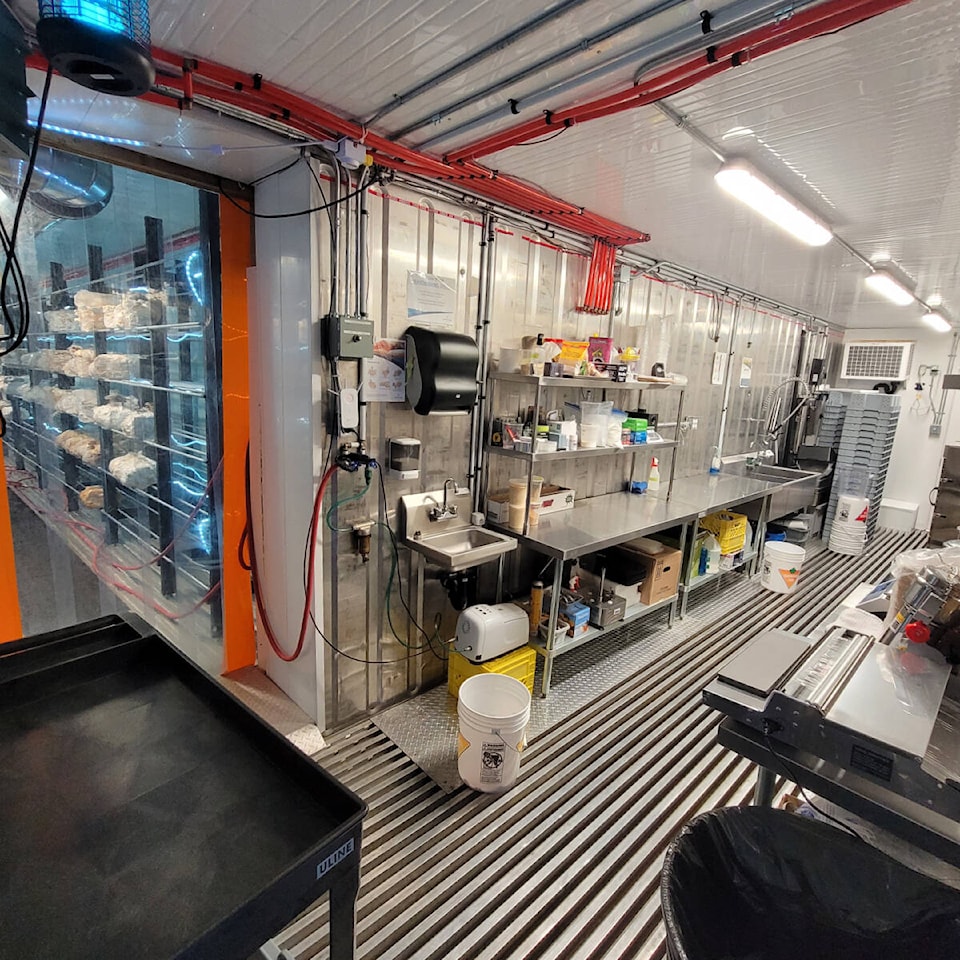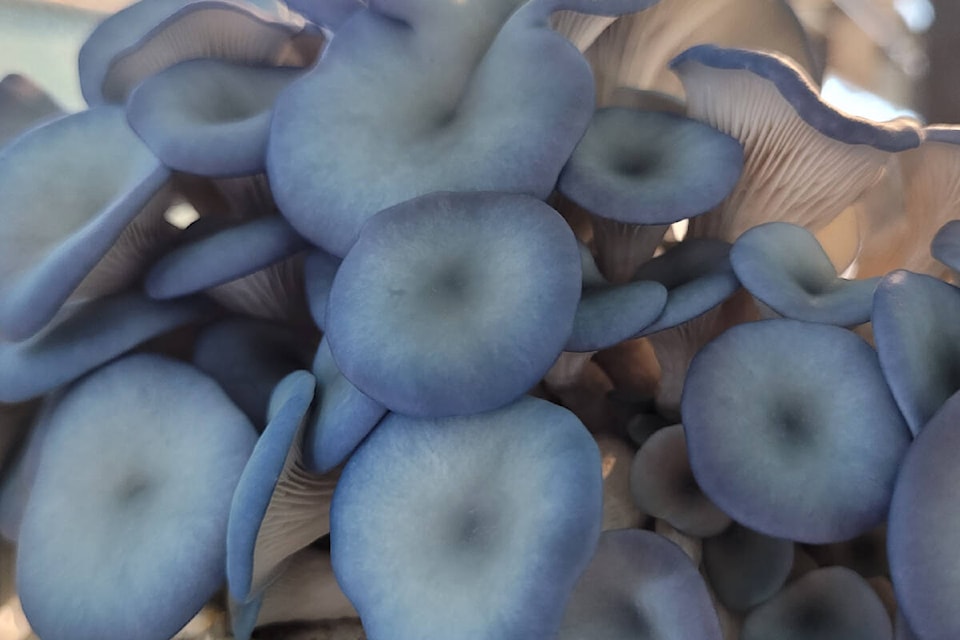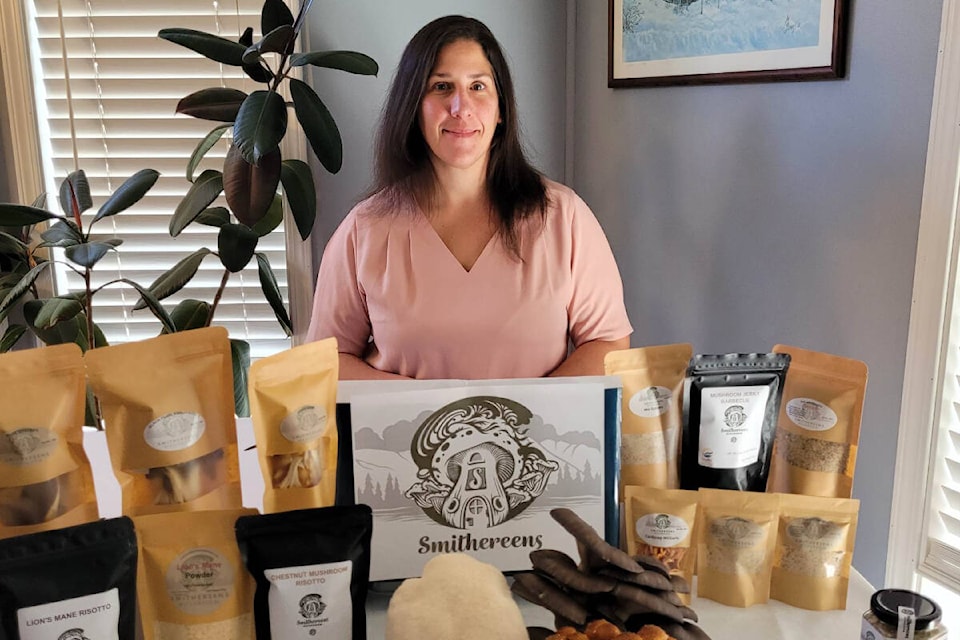Fungus or not, the vegetable that grows out of composting matter is loaded with protein, vitamins, minerals and fibre. So what makes one suddenly want to start growing mushrooms?
French Canadian sommelier Marie-Eve Arseneault and French chef Alexis Galus began growing lion’s mane mushrooms in Smithers, B.C., for their own culinary and medicinal purposes; however, in 2020, a landslide closed the only road leading up to Smithers.
“No trucks or food trucks were coming up north … We realized that if something really big happened, we don’t have many [food producers] up north. And we were already growing for our own personal consumption, so we decided, well, let’s get going,” Arseneault told Black Press Media.
The couple built a container farm on their property, allowing them to do everything from scratch — whether inoculating mushrooms or selling mycelium liquid cultures to other mushroom growers.
“One of the things we thought about when building our farm is that mushrooms are a crop that can go bad quickly, so we thought, ‘what can we do not to put our products in the garbage?’”
So they added another container to the farm and built a kitchen, allowing them to process their mushrooms.
Along with being a food producer in the north, Arseneault said that vegetarians and vegans are growing in number, and mushrooms are becoming the centre of a plate, instead of a side. On average, they grow around 20 varieties of mushrooms, adding seasonal varieties depending on the climate the mushrooms like.
“The lion’s mane mushroom looks like your brain and tastes a bit like lobster or shrimp. When you cook it, it’s so versatile. You can pull it as pork or you can make crab cakes or cook it like a steak. Chestnut mushrooms have cute caps and are really crunchy. Black poplar is a little bit more nutty flavour.
“We’re definitely in the shroom boom,” said Arseneault.
Arseneault and Galus met in Montreal’s restaurant industry before venturing to Whistler, B.C., in 2008. After Galus’ visa ran out in 2011, they headed to Australia, where they could finally learn English — as it turned out, Whistler was filled with Francophones.
The couple returned to Whistler in 2014, staying only briefly. A ski trip in Smithers convinced them to establish roots in the northern town by early 2015.
While the adventurous couple has had to slow down in terms of travelling, things continue to be busy.
“Mushroom farming is like dairy farming. You have to be here every day, so it’s a pretty big change.”
The couple’s son, Sören Galus, who turns five this summer, helps out, too.
“He pretends to love mushrooms at the market, but he doesn’t like eating them,” laughed Arseneault.
“The only thing I have been able to trick him with is the lion’s mane because it’s a little bit like tofu in many ways. So I’ve been pretending it’s chicken and stuff.”
When the fruiting blocks are ready, which are a mix of hardwood pellets and soil, they turn white. This means the mushrooms have fully colonized the blocks. Next, they move from incubation to the fruiting room. Here, they can control the humidity, CO2 levels, airflow (changed every five to six minutes) and temperature, which is necessary in a climate where temperatures go from -40 C to 30 C seasonally.
“For example, the black pearl, if we give it too much humidity, it’ll show signs of too much humidity, but another mushroom will love that amount.”
Cleanliness is a huge factor when it comes to mushroom growing. To help combat this, the walls in the facility are made of plastic panels. In addition, the fruiting room is deep cleaned once a week, with individual areas cleaned more often as needed.
After the fruiting room comes the kitchen, where fresh mushrooms are processed – dehydrated or perhaps turned into a mushroom risotto – and packaged before being sent to retailers or heading to the local farmers’ market.
The mushroom farm, licenced with the Canadian Food Inspection Agency, grows lion’s mane mushrooms, blue oysters, black pearls, turkey tails, chestnuts, golden mushrooms and more.
“For me, coming from the wine industry, where you always have something to learn, mushrooms are exactly the same,” said Arseneault.
“We have so much to discover.”
Learn more about the mushroom farmers by visiting smithereensmushroom.com.






